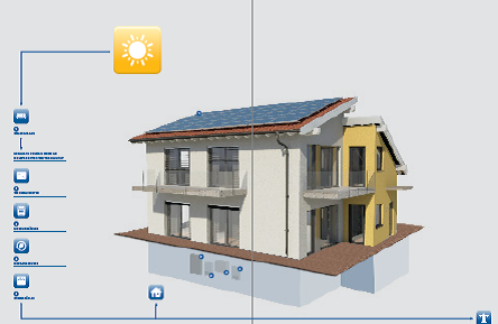Why solar electricity?
Solar electricity is active environmental protection
Every household needs energy. Anyone wanting to generate this energy intelligently, economically and, above all, in an environmentally friendly manner is making an investment in the future by installing a photovoltaic plant: Solar cells on the roof of a house convert solar energy into electrical energy (photovoltaic effect). The energy generated in this way can either be used by the respective household or fed into the public grid. This makes you more independent of your energy supplier and enables you to make an active contribution to environmental protection.
The German Renewable Energy Act (EEG) – a success model
The EEG in Germany was created in order to vigorously promote the development of renewable energies for electricity generation as a central element for climate protection, environmental protection and sustainable development, and also to increase the proportion of renewable energies. The aim is to reduce our dependency on fossil fuels.
The law first entered into force in 2000. An EU comparison reveals that it has been a particularly efficient tool for developing renewable energies and it has now been adopted by many other countries as a model for their own subsidy programmes.
Priority given to renewable energies for electricity generation with regard to:
- Active climate and environmental protection
- Sustainable development
- Reduction in the dependency on energy imports
Since the introduction of this legislation, the volume of renewable energies in German electricity generation has trebled and is now over 17 % (in 2011).;
Everything that makes your solar plant profitable
Whether solar modules, inverters or complete assembly systems, it is ultimately the quality and reliability of all components that are the most important prerequisites for long-term, secure yield and return from your solar plant.

- Zoom
- Image
The solar modules 1 generate direct current from sunlight.
The mounting system ensures the permanent load-bearing and robust attachment of the solar modules to your roof.
Inverter 2 converts the direct current into alternating current so that it can be fed into the grid.
PV generation meter 3 records your electricity yields for billing at the energy supplier.
The existing house connection 4 to the public grid continues to be used.
Power meter 5a records the amount of electricity you take from the public grid.
The reference and feed-in meter (bi-directional meter) 5b records the electricity taken from the public grid and the amount of electricity fed into the public grid.
 Phoenix Solar Germany
Phoenix Solar Germany


